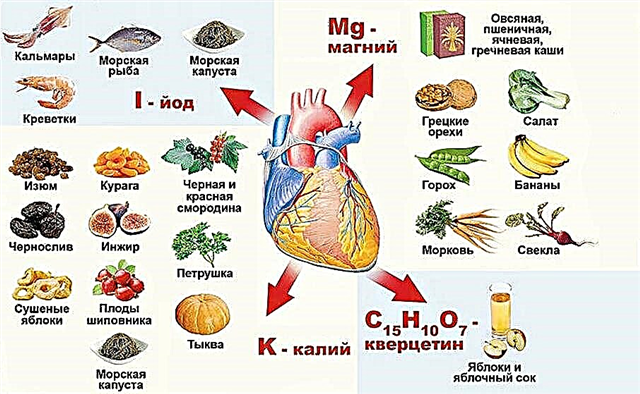Diseases of the cardiovascular system are rarely isolated, since in case of violations, the entire circulatory mechanism suffers. The development of valvular defects against the background of rheumatism, connective tissue pathology or other infectious diseases due to a long period of chronic course leads to damage to nearby structures with the formation of a complex disorder. The greatest difficulties in diagnosis and selection of adequate treatment are caused by concomitant and combined heart defects.
What is combined heart disease and how does it differ from other types?
In cardiological practice, it is customary to distinguish between the concepts of acquired (APS) and congenital heart defects (CHD):
- Congenital malformation develops during intrauterine development or childbirth, and is characterized by defects in the septa between the chambers of the heart, as well as the discharge of the great vessels and additional shunts (for example, botalle duct);

- PPS is exclusively damage to the valve apparatus, which occurs against the background of concomitant systemic or cardiovascular diseases.
There are two variants of acquired valvular defects, depending on the anatomical basis of impaired hemodynamics: stenosis (narrowing of the lumen due to deposition of calcium salts or replacement with dense connective tissue) and failure (incomplete closure of the valves).
Diagnosis of an isolated injury is not difficult by combining clinical examination and echocardiography (Echo-CG) data. However, a burdened somatic history contributes to the development of combined options.
Combined heart disease is a combination of two forms of disorder in one valve structure (combined mitral valve disease, in which there is evidence of stenosis and insufficiency), the treatment of which involves an operation to install an artificial valve.
It is necessary to distinguish this concept from the combined version of the vice. The latter is a simultaneous or gradual lesion of several structures of the valve apparatus (for example, mitral-aortic stenosis).
In clinical practice, there is no consensus on the use of these terms; therefore, it is allowed to use both options with a detailed diagnosis in brackets.
Combined defect and its variant with a predominance of stenosis
The presence of a complex lesion implies a heterogeneous clinical picture and the absence of specific complaints. The diagnosis is established by the signs of an isolated disorder, therefore, the following variants of the combined defect are distinguished:
- With a predominance of stenosis. With damage to the mitral valve, patients complain of shortness of breath and palpitations, which progressively increase. The borders of the heart are predominantly shifted up and to the right (due to the left atrium).
- With a predominance of insufficiency. Aortic defect is characterized by visible pulsation of blood vessels (both carotid arteries and jugular veins), frequent fast and high heartbeats. The boundaries of the relative dullness of the heart are shifted down and to the left, the expansion of the vascular bundle occurs mainly due to the aorta.
- No clear predominance. Symptoms and results of additional research methods are expressed in the same degree.
Combined aortic heart disease with a predominance of stenosis is characterized by signs of both pathologies, however, a specific feature is a weak, slow and rare pulse, as well as a decrease in blood pressure, mainly systolic (upper).
The appearance of auscultatory features and displacement of the boundaries of the heart can also be a sign of other pathologies:
- Bacterial endocarditis, which is accompanied by severe symptoms of intoxication, high fever, and when analyzing ECHO data, purulent lesions and growths on the valves are determined.
- Acute rheumatic fever is a disease caused by the work of beta-hemolytic streptococcus toxins in the blood. It is characterized by high fever, annular erythema (redness), chorea (involuntary muscle contraction), and signs of damage to the heart muscle.
- Traumatic injury (tearing of the chord), in which mitral valve insufficiency develops. To diagnose this condition, interviewing the patient and echocardiography data plays a role.
- Hypertrophic and dilated cardiomyopathies are diseases characterized by an increase in the size of the heart cavities and the formation of valvular insufficiency. The causes of the pathologies are not fully understood, the symptoms of heart failure are increasing at a high rate, and most often the treatment is not effective.
Diagnostics
The arising hemodynamic disorders have an unfavorable prognosis for the life and health of the patient. The danger of pathology lies in the fact that part of the blood that must pass through the narrowed space into the systemic circulation is directed to the chambers located above. This phenomenon causes chronic hypoxia of all organs and tissues, as well as excessive physical exertion on the heart muscle.
Diagnosis of concomitant heart defects is carried out using the following studies:
- Auscultation with a stethophonendoscope or phonocardiogram recording, additional heart sounds characteristic for each of the pathologies are highlighted. For example, if the aortic valve is damaged: systolic murmur at the second point of auscultation and diastolic murmur at the apex.
- Chest x-ray. The processes of changes in the myocardium caused by defects and an increase in pressure in the main vessels lead to a distortion of the cardiac shadow. The severity of individual arches is noted on the right (right atrium and ventricle) or on the left (aorta, pulmonary trunk, left atrium, left ventricle).
- Electrocardiogram (ECG): registration of the occurrence and conduction of electrical impulses through the myocardium using sensors located on the chest and limbs. The development of hypertrophy and pronounced dilatation (expansion) of the heart chambers contributes to the appearance of arrhythmias, which require special treatment.
- Echocardiography (echo-KG) is an ultrasound method for examining the internal structures and movement of blood in the chambers of the heart in different phases. With the help of the study, the diameter of the opening, the fact of the presence of valve damage, the degree of regurgitation (reverse flow of blood) and the blood flow rate are established.
To verify the diagnosis, cardiac catheterization and ventriculography (X-ray examination with intravenous administration of a contrast agent) are used. These methods make it possible to measure the value of pressure in the chambers of the heart and great vessels, the size of the cavities and the severity of regurgitation.
Conclusions
Combined and concomitant defects are complex cardiac pathologies that require certain skills for timely diagnosis and treatment initiation. Clinical signs of damage to a valve (or several) with two mechanisms of circulatory disorders are hidden, therefore, most often doctors diagnose some kind of isolated defect. The use of an integrated approach and modern methods allows us to establish a reliable diagnosis and send the patient for surgery before irreversible changes occur in other organs.




